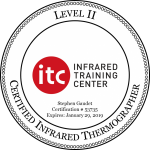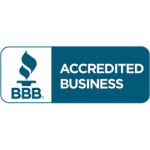A home inspection is a limited, non-invasive examination of the condition of a home, often in connection with the sale of that home. Home inspections are usually conducted by a home inspector who has the training and certifications to perform such inspections. The inspector prepares and delivers to the client a written report of findings. The client then uses the knowledge gained to make informed decisions about their pending real estate purchase. The home inspector describes the condition of the home at the time of inspection but does not guarantee future condition, efficiency, or life expectancy of systems or components. Taken from Wikipedia.
Do you the buyer know what this statement means? “A home inspection is a limited, non-invasive examination of the condition of a home” Simply stated, if a home inspector can’t see a problem at the time of the inspection, they cannot be held responsible which is not always in your best interest.

During a recent inspection I was scanning the kitchen ceiling and found a water leak using thermal imaging above the kitchen fireplace. There were no visual water stains of a leak on the ceiling at all.
When inspecting the roof and chimney I usually walk the roof or place a ladder at the eaves not possible this time because the ground was covered with snow and ice.
Visually, chimney flashing appears to be fine but the active water leak in the kitchen ceiling directly below the chimney tells me that’s not to be the case.



Photos taken from inside the attic space, active moisture and mold, insulation and drywall below soaked, sheathing is soft and may require replacement.

This is an extensive moisture leak running through two floors. No surprise the ceiling in the second-floor bathroom has active moisture readings. Again, no signs of a moisture stains on the ceiling.

The chimney leak has made its way down the wall and into the vanity.
Findings: Thermal imaging found a two-story chimney leak in the walls with signs of mold in the 2nd floor vanity and inside the attic space. Mold may be present in the walls all the way down to the kitchen and further. I advised my client that I suspect mold issues in the walls. The drywall surrounding the chimney may contain mold and the only way to know is to open the walls…expensive. Roof repairs are needed around the chimney and sheathing which is soaked and soft may require replacement. Worst case scenario a new roof and sheathing may be needed, more money. Attic insulation is soaked which needs replacement, drywall below it may also require replacement and mold remediation is needed.
There were no moisture stains at time of inspection. Finding this all made possible with one tool…thermal imaging.
One last item you the buyer should be aware of:
Excerpt taken from the New Hampshire Standards of Practice:
(p) “Readily accessible” means available for visual inspection without requiring moving of personal property, dismantling, destructive measures, use of a ladder, or any action which will likely involve risk to persons or property.
The only way to find the source of this problem was to go into attic with use of a ladder. There are home inspectors that do not have or use a ladder.
If you want a complete inspection ask the inspector your considering do you provide thermal imaging and use ladders? The choice is yours.





